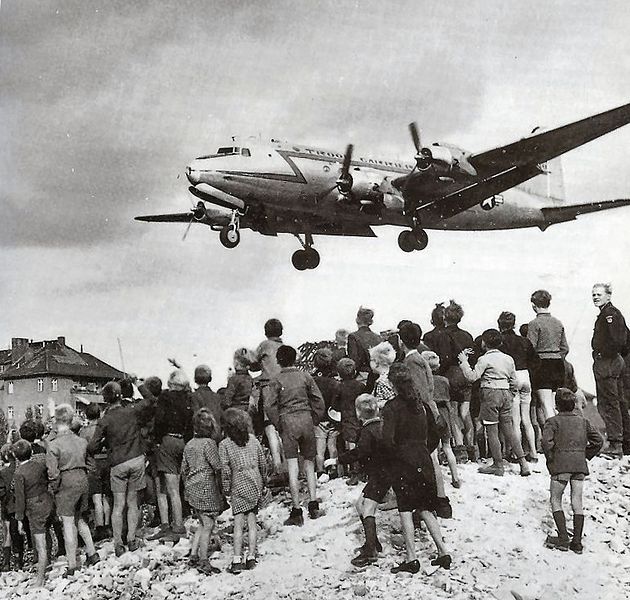Authors:
Historic Era: Era 8: The Great Depression and World War II (1929-1945)
Historic Theme:
Subject:
April/May 2003 | Volume 54, Issue 2


Authors:
Historic Era: Era 8: The Great Depression and World War II (1929-1945)
Historic Theme:
Subject:
April/May 2003 | Volume 54, Issue 2

Berlin’s history intersects with America’s at many points, and tourists who seek these intersections will arrive at the first of them sooner than they expect. Americans who came of age soaking up reruns of Twelve O‘Clock High, The World at War, and Victory Through Air-power may find that flying into Berlin is a slightly disconcerting way to approach the place.
The view from an airplane window is surprising because the city is built around large wooded parks and lakes that you rarely saw in those old movies and newsreels. But it all looks somehow familiar, too, giving the dreamlike sense that you’re seeing for the first time a thing you’ve seen many times before. The first sight of the English countryside, much of which looks like watercolor illustrations in American children’s books, gives a more benign version of the same effect: home again to a place you’ve never been, even if your actual ancestral home was Minsk, Guadalajara, Naples, or Canton.
When you come into Berlin, the effect can make you a bit tense. Asked by his German hosts how his flight had been, an otherwise-tactful friend of mine replied, “Fine. No flak, no Messerschmitts.” This struck me as funny, but perhaps the citizens of a city that was still bomb-ravaged when I first saw it in 1994 might feel differently. Later, the same friend heard a joke about the 1943 Royal Air Force raid on Hamburg, which started the world’s first firestorm and killed 35,000 people; it involved a man driven mad by the bombing who leaped from his shelter and screamed through the burning air, “But I never voted for him.” This made my friend ashamed of his own joke. Then, he became puzzled, for neither he nor his hosts had done these things. They had not even been alive at the time. Yet this past was somehow present between them.
Berlin, though, is 900 years old, and it has more than one past. If relatively few of them intersect American history, most of the ones that do are dramatic.
At the close of World War II, Berlin, like the rest of Germany, was divided into occupation zones by the four victorious powers. In 1949, the American, British, and French zones merged into the Federal Republic of Germany, or West Germany, while the Russian zone became the German Democratic Republic, and the Russian sector of Berlin East Germany’s capital. The city came to seem the very center of the Cold War and occasionally the flash point where a shooting war might break out. In 1948, the Russians cut off land access, leaving West Berlin an island surrounded by Warsaw Pact territory. This was the earlier of two Berlin crises. For events that threatened to spark